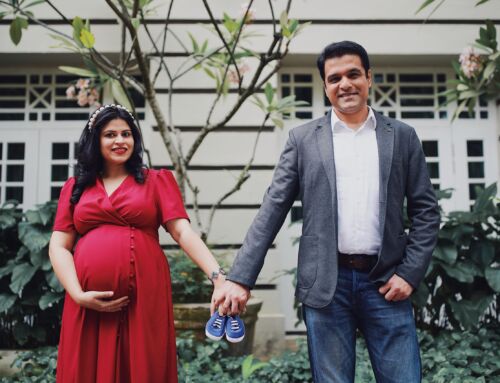Are you going to have a Baby?
Congratulations for the Little Buddle of Joy…
During pregnancy, you feel very connected and extremely protective of the baby growing within you and feel worried about symptoms like the tightening sensation in your abdomen. Over years many women have asked me about the same during prenatal training. One of the reasons for abdominal tightening is Braxton Hicks Contractions which are the false labor pain that you may experience during pregnancy. They are a sign of your body preparing for childbirth and are also called practice contractions. Braxton Hicks’s contractions thus are false labor pain like a rehearsal for the final drama, for the actual childbirth process. Braxton Hicks Contractions feels like the real thing, as they are experienced for real, by almost all pregnant women.
Let us know and understand and get answers to common concerns and questions about Braxton Hicks contractions.
What are Braxton Hicks Contractions?
A pregnant woman experiences Braxton Hicks pain, i.e. off and on uterine contractions during pregnancy. They are named after John Braxton Hicks, a British doctor who identified and defined them in 1872.
What do Braxton Hicks’s contractions feel like?
Braxton Hicks Contractions are a tightening in your abdomen that comes and goes. These contractions don’t get closer together, don’t increase in how long they last or how often they occur, and don’t feel stronger over time. Braxton Hicks Contractions can feel like mild menstrual cramps and can be uncomfortable. They often come with a change of position and stop with rest. You can talk, walk and go about your normal activities during Braxton Hicks’s contractions.
What is the usefulness of Braxton Hicks Contractions?
The most important function of these contractions is to tone uterine muscles and improve blood flow to the placenta. They do not cause dilatation of the cervix but can help in softening the cervix, and in effacement when the cervix is getting ready for delivery. They may seem to be difficult to distinguish from actual labor contractions, so they are also called false labor pains.
How are these contractions different?
Although they are experienced for a shorter duration and are irregular, sometimes they may become rhythmic and frequent, fooling you into thinking that you are going into labor.
Is there any fixed pattern of these contractions coming and going?
There is no fixed time when they occur, on waking up or at night when the bladder is full or pregnant woman is having mild dehydration. At different times body kind of triggers Braxton Hicks Contractions.
What do you feel during Braxton Hicks contraction?
During Braxton Hicks contraction you may feel a general tightening and/or squeezing in the lower abdomen and relaxation after a few seconds. You can identify them because of their irregularity and sporadic occurrence.
When do Braxton Hicks contractions start?
They generally start after 20-22 weeks and become noticeable after 28weeks. These contractions usually cause much less pain compared to actual labor contractions. One can say they are like menstrual cramps, a sort of tightness in the lower abdomen. The strength and frequency of these contractions change, and at 30 weeks can last anything between 20-60 seconds. You should consult your doctor if the pain becomes severe.
How Braxton Hicks contractions are different than real labour contractions
- These contractions generally do not cause any pain.
- They stop if you shift position or change the activity.
- They do not follow a fixed pattern or regular intervals.
- Interval between contractions does not get shorter.
- They do not lead to the opening of the cervix.
- Frequency and duration don’t have a set pattern.
- Contractions do not stop during movement.
- Location of the pain is at the front of the abdomen or pelvic area.
Does the baby move during Braxton Hicks?
Yes, your baby can still move during both Braxton Hicks Contractions and true labor contractions.
Every baby’s movements are different, so it’s hard to predict if your baby will move during contractions. Some people say they feel their baby move less, while others feel lots of movement during contractions. It’s always a good idea to pay attention to your baby’s movements and tell your doctor if you notice your baby hasn’t been active. Consult your doctor if you haven’t noticed any movement of the baby.
Triggers for Braxton Hicks contractions
- Baby’s movements in the womb.
- Full bladder.
- If someone touches your belly.
- Sexual excitement, especially after the act.
- If your body is dehydrated to lower than normal levels, it can be the cause of contractions.
When one should worry about Braxton Hicks Contractions. Generally, they are not something to worry about.
Talk to your doctor if
- If frequency increases.
- If they are painful.
- Increased vaginal discharge.
- Bleeding or spotting.
- Pain in the lower back or pelvic region.
- More than 4 contractions in one hour.
If you notice any of these symptoms, consult your doctor.
Braxton Hicks Contractions care and treatment
They do not hurt, although you may feel uncomfortable and uneasy. There are a few things you can do to feel more comfortable during Braxton Hicks Contractions:
- Lie down and rest if you’ve been moving.
- Change of position or activity is helpful, i.e. if walking, rest for some time and if resting, go for a walk.
- Eat a snack.
- Drink more water and keep hydrated and avoid recurrence of the contractions, if they occur due to dehydration.
- Relaxation exercises are helpful.
- Slow yet deep breathing exercises help reduce the discomfort of contraction.
- It will help you to plan and keep your bladder empty while going out.
- A warm and relaxing bath can help in reducing Braxton Hicks Contractions.
- Read a book or get a prenatal massage.
- One can try out a hot water bag.
Each and every pregnant woman experience Braxton Hicks contraction to different degrees. These contractions are felt during pregnancy and can be mistaken for true labor contractions.
Important thing for you to know is unlike true labor, Braxton Hicks are irregular in frequency, less intense, and usually go away if you change positions. They are your body’s way of getting ready for labor, but it doesn’t mean labor is coming. Discuss Braxton Hicks Contractions with the doctor, who will help you understand the symptoms or alarming signals you should watch for.
Reference:
https://my.clevelandclinic.org/…








